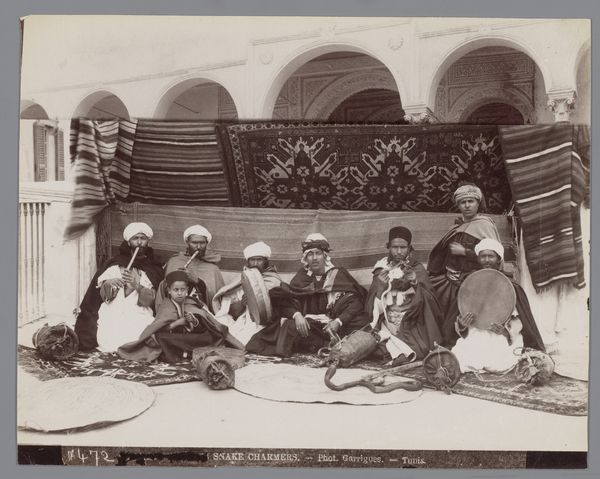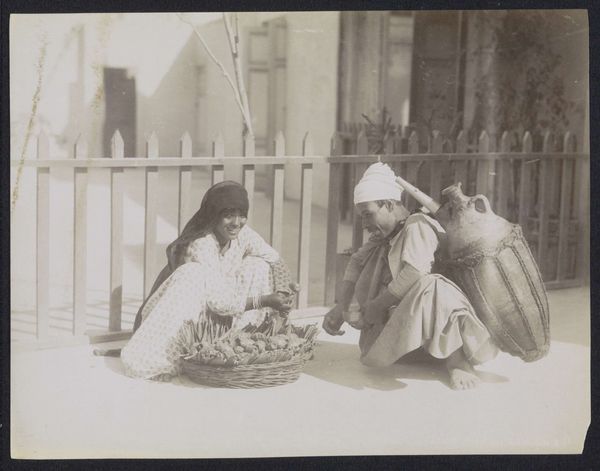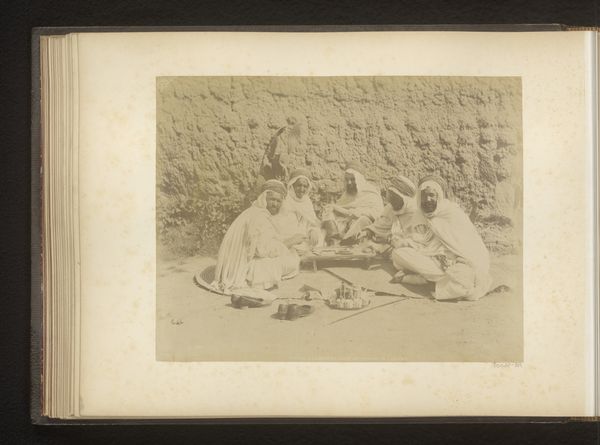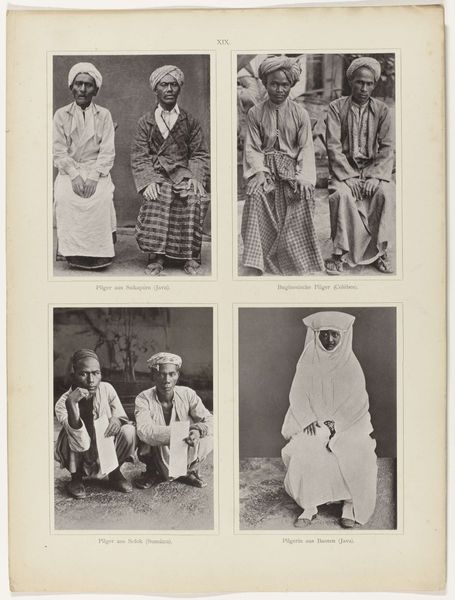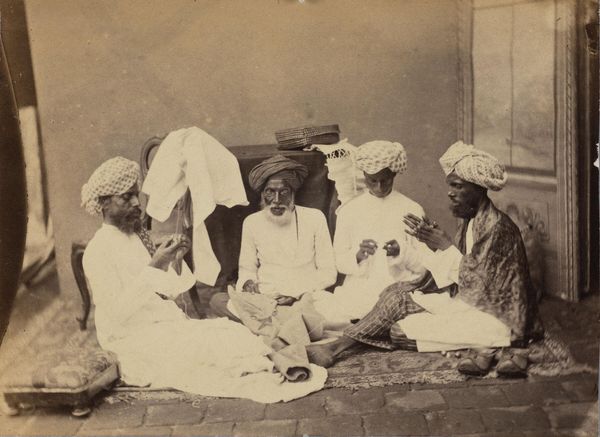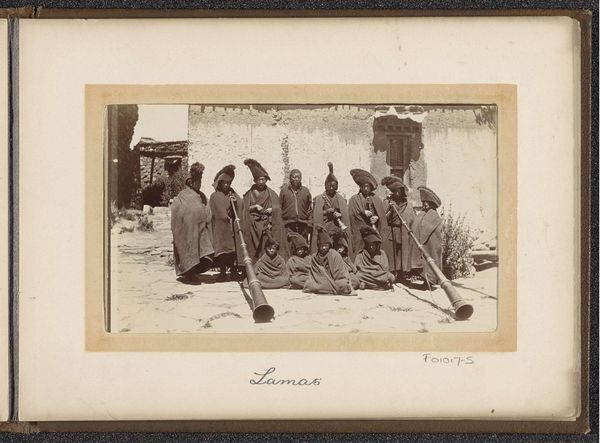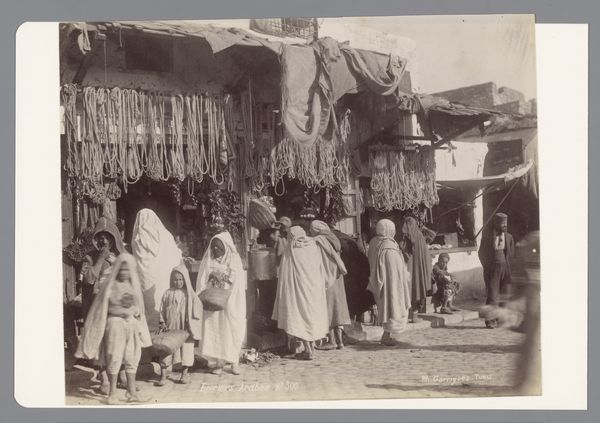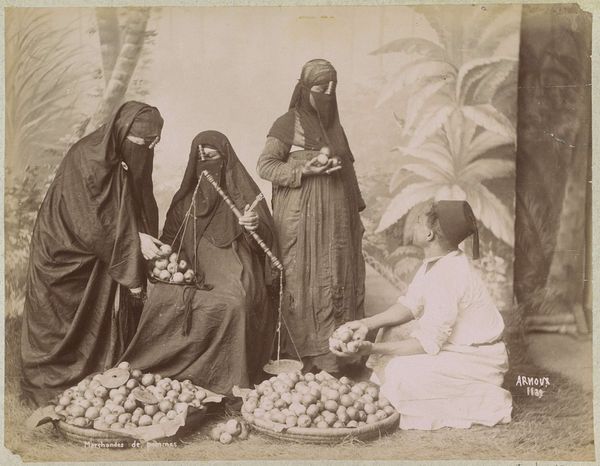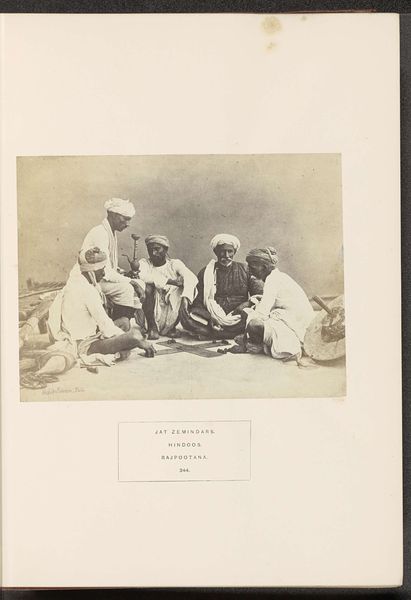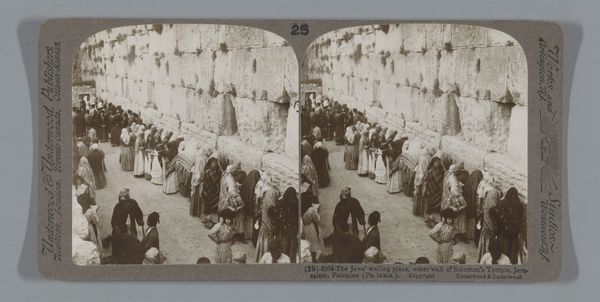
photography
#
portrait
#
african-art
#
16_19th-century
#
photography
#
orientalism
#
genre-painting
Dimensions: height 278 mm, width 345 mm
Copyright: Rijks Museum: Open Domain
Curator: This photograph, created sometime between 1863 and 1900 by Neurdein Frères, presents a group portrait of four Ouled Naïl women in Algeria. Editor: My first thought? A striking composition, despite its monochrome palette. The figures are arranged with a deliberate symmetry, and their stillness lends the scene a sense of quiet dignity. Curator: It's critical to recognize the history embedded within. Images like these often served to exoticize and essentialize cultures through a colonial lens, solidifying power dynamics in representation. This portrait, fitting into the Orientalist movement, is no exception. Editor: Precisely. It's vital to unpack that. We can appreciate the beauty and artistry, but only when acknowledging the political implications of its creation and the subsequent consumption by a Western audience eager for exoticized visions of the "Orient." How might we, through modern intersectional lenses, engage with the identity, gender, race and politics entangled in the work? Curator: Look at the individual details – their ornate headwear, the relaxed pose, the shoes casually set aside, the suggestion of communal tea drinking. These could invite interpretations that focus on community and individuality beyond the generalized narratives that Orientalism tended to promote. Editor: The role of the image-making industry also demands inquiry: consider the political, financial, and social imperatives under which photographic studios operated, impacting not just the artistic output, but also societal comprehension of those being photographed. Curator: And how this piece functioned publicly within art spaces! By showing it today, it's key we discuss what such displays implicitly express, how that reinforces the legacy, and whether that empowers prejudiced perceptions, especially from its original milieu and epoch. Editor: Yes. Reflecting on the work compels an honest acknowledgement about the complex relationship between artistic documentation and its socio-political ripples, forcing thoughtful contemplation upon how we encounter and understand visual accounts emanating from distinct historical moments.
Comments
No comments
Be the first to comment and join the conversation on the ultimate creative platform.
